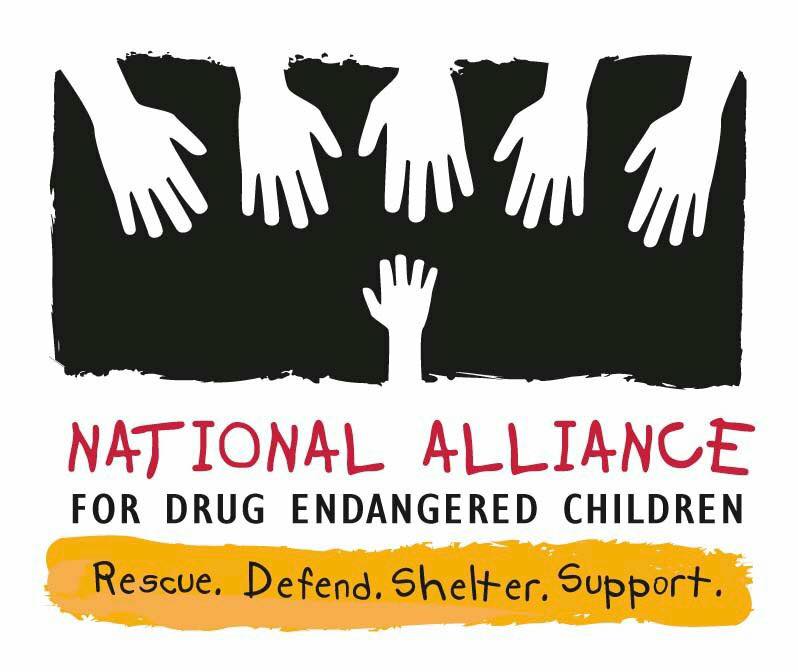Contact Us
To provide feedback on the Community Policing Dispatch, e-mail the editorial board at CPDispatch@usdoj.gov.
To obtain details on COPS Office programs, publications, and resources, contact the COPS Office Response Center at 800-421-6770 or AskCopsRC@usdoj.gov

U.S. Department of Justice
Office of Community Oriented Policing Services
Washington, DC 20530
Children are the most vulnerable members of our communities.
- 8.7 million children live in households with at least one parent who has a substance use disorder.
- 7.5 million children live in households with at least one parent who has an alcohol use disorder.
- 2.1 million children live in households with at least one parent who has an illicit drug use disorder.
We know that children whose parents or caregivers misuse legal or illegal substances are three times more likely than other children to be verbally, physically, or sexually abused and four times more likely to be neglected. They also have a higher likelihood of developing substance use problems themselves. That is a root cause of the generational cycle of substance misuse and addiction we recognize in our communities. How do we break that cycle? When law enforcement collaborates with other community professionals, disciplines, and agencies, they increase the opportunities to change the trajectory of these children’s lives as well as the health, safety, and well-being of their community.
Albert Einstein said, “We cannot solve our problems with the same thinking we used when we created them.” That means we have to be willing to step out of our professional silos, collaborate with others, and do things differently. To protect and serve our most vulnerable population—our children—we must be conscious of things that can create risk or cause harm to children. The National Alliance for Drug Endangered Children has found that when law enforcement collaborates with other professionals and disciplines in state, tribal, local, or community alliances, the collaboration raises awareness and understanding about how legal and illegal substance misuse causes risks that affect children. This awareness creates opportunities for early identification, intervention, services, and support to children and families. All of these allow opportunities to change the trajectory of their lives.
 Law enforcement has numerous opportunities to identify children who are at risk or need help because of a parent or caregiver’s legal or illegal substance misuse. Law enforcement is integral in the identification of drug endangered children as well as intervention in the child and family’s life. Law enforcement has the unique ability to sometimes see things that other disciplines are not able to see. For example, while executing a search warrant, law enforcement officers may see signs of drug use or a house that is filled with risks or safety concerns for children. They may see drug paraphernalia lying around and small children playing amongst these risk and safety concerns in the home. Law enforcement can then document the information and pass it along to their partners to assist these children and families. Information and evidence are vital to other disciplines when doing their investigations and making decisions around child safety and well-being as well as providing services to the children and family.
Law enforcement has numerous opportunities to identify children who are at risk or need help because of a parent or caregiver’s legal or illegal substance misuse. Law enforcement is integral in the identification of drug endangered children as well as intervention in the child and family’s life. Law enforcement has the unique ability to sometimes see things that other disciplines are not able to see. For example, while executing a search warrant, law enforcement officers may see signs of drug use or a house that is filled with risks or safety concerns for children. They may see drug paraphernalia lying around and small children playing amongst these risk and safety concerns in the home. Law enforcement can then document the information and pass it along to their partners to assist these children and families. Information and evidence are vital to other disciplines when doing their investigations and making decisions around child safety and well-being as well as providing services to the children and family.
When law enforcement collaborates with other disciplines, they gain an understanding about how those disciplines identify the risks and safety issues to children. Sharing that information can increase the amount of relevant information and evidence law enforcement can gather and share with the other disciplines. For instance, some disciplines would ask if there is evidence or signs of children in an automobile or home. If so, where are the children? Is there evidence that children are being properly cared for? What are the environmental conditions in the home? When disciplines learn from one another, children and families benefit.
Another benefit of collaboration is that it helps professionals and communities gather targeted data. Those data can be used to build community awareness, support, and engagement. Collaboration also creates opportunities for interagency sharing and training. The more collaborators know about one another, the more coordinated and sustainable their efforts. The most effective way to serve and protect our most vulnerable population—our children, our future—is to collaborate.
For more information about how law enforcement can collaborate with other professions, disciplines, and agencies, take a look at National DEC’s new updates and one-pagers for law enforcement. View additional training developed in partnership with the U.S. Department of Justice, Office of Community Oriented Policing Services.
The National Alliance for Drug Endangered Children (National DEC) provides training, technical assistance, and resources to state, tribal, local, and community DEC alliances and to all those in the field and community who are in contact with, assist, or care for drug endangered children. Learn more about how to get involved on the National DEC website.
Subscribe to Email Updates
To sign up for monthly updates or to access your subscriber preferences, please enter your email address in the Subscribe box.






